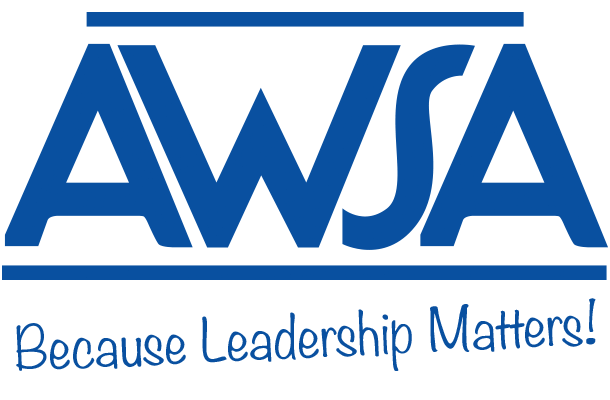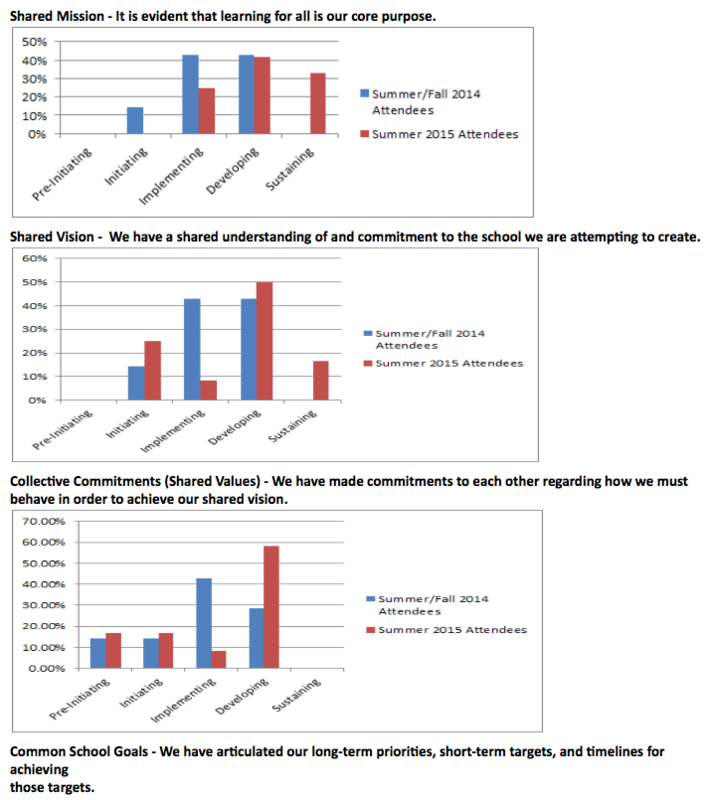A District's Journey of Utilizing Professional Learning Communities and Evidence Based Practices to Implement Personalized Learningby Dr. Louise Blankenheim, District Administrator and Dawn Mueller, Director of Student Services The Kiel Area School District is in the sixth year of first developing, and now implementing the vision of personalized learning for all students through a Professional Learning Community culture. During a time of state mandates, common core, RTI, closing the achievement gaps and limited resources we have been able to streamline district initiatives through consistent focused work on the four questions that are the foundational work of Professional Learning Communities (PLCs). Where It All Began Historically, the Kiel Area School District has had the privilege of early release once a week. When I became the District Administrator of Kiel, six years ago I had the vision of using this time more effectively by focusing on data with the goal of raising student achievement. This time was instrumental in allowing the work of PLCs to develop. The first step was professional development and getting the staff to invest in the vision. The first year we set the vision that EACH student will achieve at high levels. We shifted our focus on early release days to improving student achievement by analyzing student data. We invested all professional development time and resources on the DuFour Professional Learning Communities model. Rick and Becky DuFour’s book, Learning by Doing helped us begin our journey. In 2010, we transitioned the early release time to “team time” as a component of our PLC culture. As with any new initiative it was critical to explain why it was necessary to change. Our Leadership Team of Principals and Central Office Administrators began to provide research into using evidence-based practices. We also worked hard to shift our mindset by focusing on each student as an individual with the ability to achieve at high levels. We moved from teaching whole group instruction to creating small groups. Teachers of instructional groups in literacy and math began to customize the instruction to get each student to proficiency. On every early release day teams would select a common standard or unit and ask the four questions: 1) What knowledge and skills should every student acquire? What do we want our students to learn? ( essential standards) 2) How will we know when every student has acquired the knowledge and skills? (common formative assessments 3) How will we respond when some students do not learn? (Intervention) 4) How will we extend and enrich the learning for students who are already proficient? (Intervention and enrichment). DuFour, DuFour, Eaker and Many, Learning by Doing, 2006, Solution Tree Press. The conversations among the teachers began to shift and it was very exciting to witness! Data was the focus and learning was the outcome. And...this was all being done during the difficult time of ACT 10. Year Two: The Journey Continues PLCs were showing progress as the team time work began to shift; however, there seemed to be “silos” remaining. The challenge as a leader was to bring coherence to the initiatives that were present such as: RtI, Educator Effectiveness, Gradual Release of Responsibility and Closing the Achievement Gap. I guess you could have said we were “doing” all these things but greater clarity and coherence was necessary. The Student Intervention Teams at each school evolved their focus around data and the four questions. Our Literacy Committee trained on Gradual Release of Responsibility as the students learned how to work independently and in small groups. We later discovered that this was great preparation for our Personalized Learning endeavor. The Special Education Department was in year three of inclusionary practices which centered around least restrictive practices and having special education students in the regular education classrooms with support. Year Three: Prioritizing our Staffing Needs Our PLC culture was developing further and we discovered through the process how important it was to have additional support for our teachers. Understanding the budget deficit and the critical need to prioritize our funding, a shift in staffing was recommended. We reduced a school counselor to gain a full-time school psychologist. We hired a Gifted and Talented/Instructional Coach and added an Instructional Technology Coach. We moved from limited RtI to a full range of interventions at elementary and middle school. Coaches assisted with the instructional model and the school psychologist helped with learning and evaluating the data. The District received very good news that the State Personnel Development Grant written by Dawn Mueller, Director of Pupil Services was granted. This was instrumental in focusing PLC work at the high school. An external coach from DPI was assigned to work with a high school math team to achieve a five year outcome of improved achievement for students with disabilities through effective PLC practices. This grant opened the doors to job embedded professional development and greater attendance at the PLC Institutes in the summer. Year Four: Strategic Planning A Strategic Planning process was instituted with a school and community group of volunteers. Through the process, two goals were created. One an extension of our work with Professional Learning Communities. The strategic plan goal was to implement Personalized Learning, utilizing data-based decisions through a professional learning community culture. The strategic planning committee of thirty-two people came to the agreement that district resources and professional development time should be focused on Personalized Learning. We contracted with The Institute for Personalized Learning at CESA 1. Deb Sixel, Director of Curriculum, and Dawn Mueller provided professional development on John Hattie’s work to facilitate a greater understanding of “what works well”. Conversations during team time extended, and the teachers embraced utilizing the professional learning communities as a means to analyze student data, create evidence-based practices and begin to implement personalized learning instruction within their classroom. Year Five: Data Evidence for Reading Specialist and Instructional Coaches Human resources are our greatest asset so we went to work developing the rationale for an additional Reading Specialist at the Middle School and an additional Instructional Coach. We were able to empirically argue for these positions due to the trend data with our middle school reading achievement. Teachers shared the coaching successes they experienced and how classroom teachers who were reluctant to try Personalized Learning were now making progress. The learning data is improving in STAR and AIMSweb (see graphs). The high school revised their advisement time to an extended intervention block to provide math and reading interventions. The Special Education PLC grant brought forward the work of common formative assessment training for the high school math department. Word spread and the majority of the school teams in the district were trained during the school year by the Director of Curriculum and Instructional Coach. Our professional development budget was solely spent on PLC work and Personalized Learning. Ken Williams provided an Inservice on Collective Commitment to all staff. Site visits were occurring with staff observing PL schools in CESA 1 and summer PL institutes were created by our coaches and administrators. Teachers were surveyed and the results were shared. (see graphs below) Year Six: Moving Along on the Journey of Continuous Improvement The staffing plan included a part-time instructional coach at the high school and an instructional coach was added at the elementary school. A district-wide PLC Leadership committee began to further our goals and action steps of Personalized Learning through the PLC process. Our elementary school for the first time was recognized as a Title 1 School of High Progress by the DPI. The School Psychologists implemented a data team process based upon professional development from WSPA (Wisconsin Association of School Psychologists) and University of Minnesota PRESS materials. This process strengthened the evidence-based practices discussed during the student intervention team meetings and grade level PLC team meetings. The strongest impact of this process resulted in focusing more on the instructional practices at the universal level to increase the number of students achieving at or above benchmark in reading and math. Work with teams and departments on essential learning targets and common formative assessments continued during Inservice days and early release team time. And in 2016/17 we will be adding an additional Instructional Coach to the high school. At Kiel we do not see this work as an initiative. This is a long-term process based upon research and evidence-based practices. We know we have much more to do, but we are seeing achievement data improve. We are participating in very different conversations and we are continuing to learn and grow as a culture dedicated to the success of each student. It has been a journey worth taking. The charts below represent a small sample of evidence of academic achievement and teacher responses regarding the current PLC culture. AIMSweb - Percent of students at/above winter benchmark
5th Grade Data - Use of Data Team Process
* SGP= Student growth percentile. A score of 60 or higher is considered high growth. Laying the Foundation: We have a clear sense of our collective purpose, the school we are attempting to create to achieve that purpose, the commitments we must make and honor to become that school, and the specific goals that will help monitor our progress.
Back to the Homepage |


